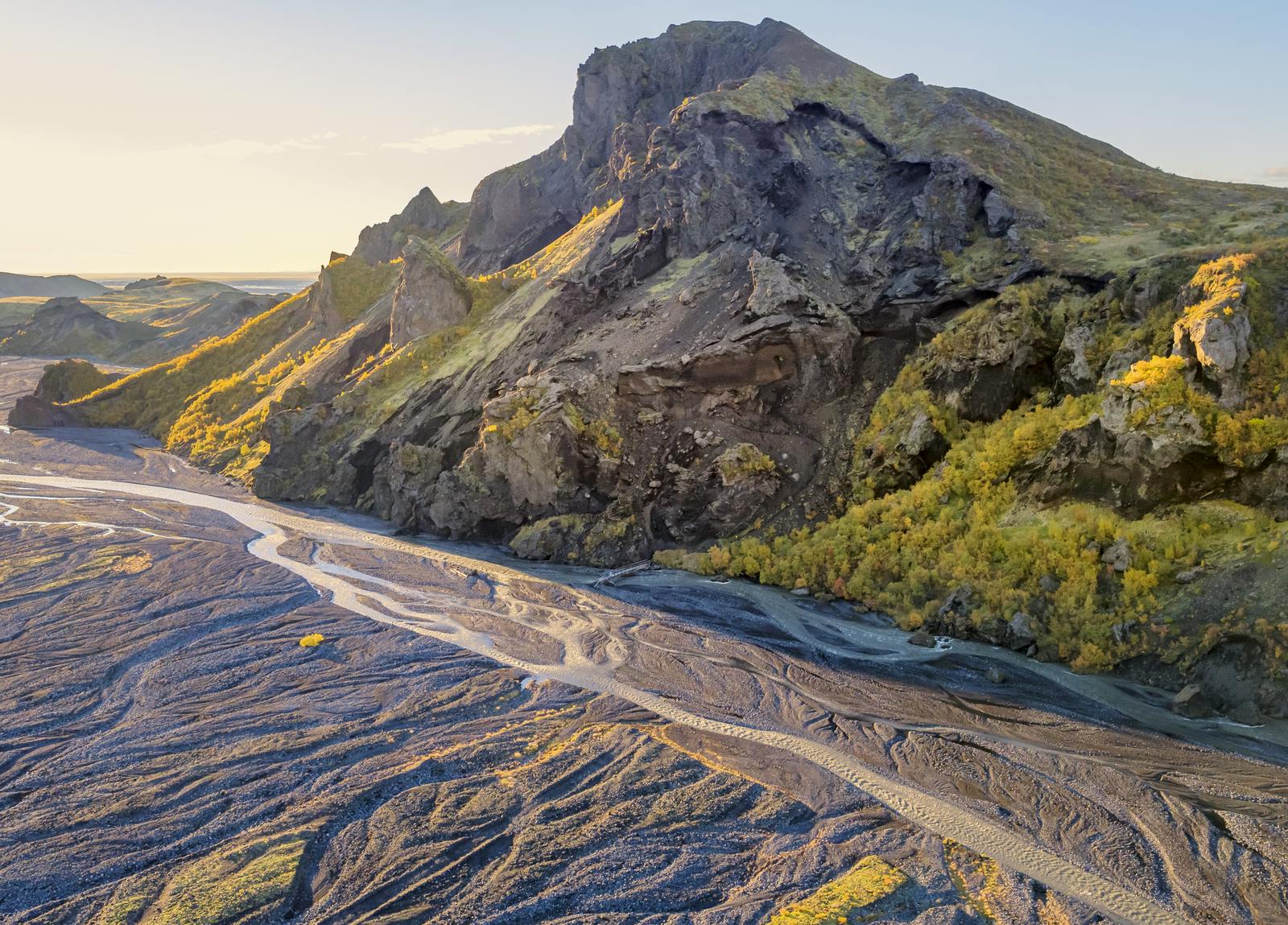
Thorsmork is also known as Thor's Valley
Imagine standing where Norse gods once walked—where fire and ice have shaped the land for millennia. Thorsmork (Þórsmörk), meaning "Thor’s Valley," sits cradled between three mighty glaciers deep in Iceland’s highlands. This rugged wilderness is a living testament to the raw forces that built Iceland, where volcanic eruptions meet ancient glaciers, and life stubbornly pushes through black volcanic ash.
Thor’s Valley
Named for the Norse thunder god Thor, this valley carries an ancient, mythic energy. The name Þórsmörk translates to "Thor’s Wood" or "Thor’s Forest," reflecting how the area’s birch woods once stood as a sanctuary in the harsh Icelandic interior. Today, these green patches still surprise visitors with their rarity — Iceland’s forests were decimated by centuries of grazing and volcanic activity, leaving most of the island barren.
In Thorsmork, ridges wrapped in mist, rivers thundering through deep canyons, and moss-covered lava fields create an atmosphere that feels timeless and sacred. It’s not just a place to see — it’s a place to feel.
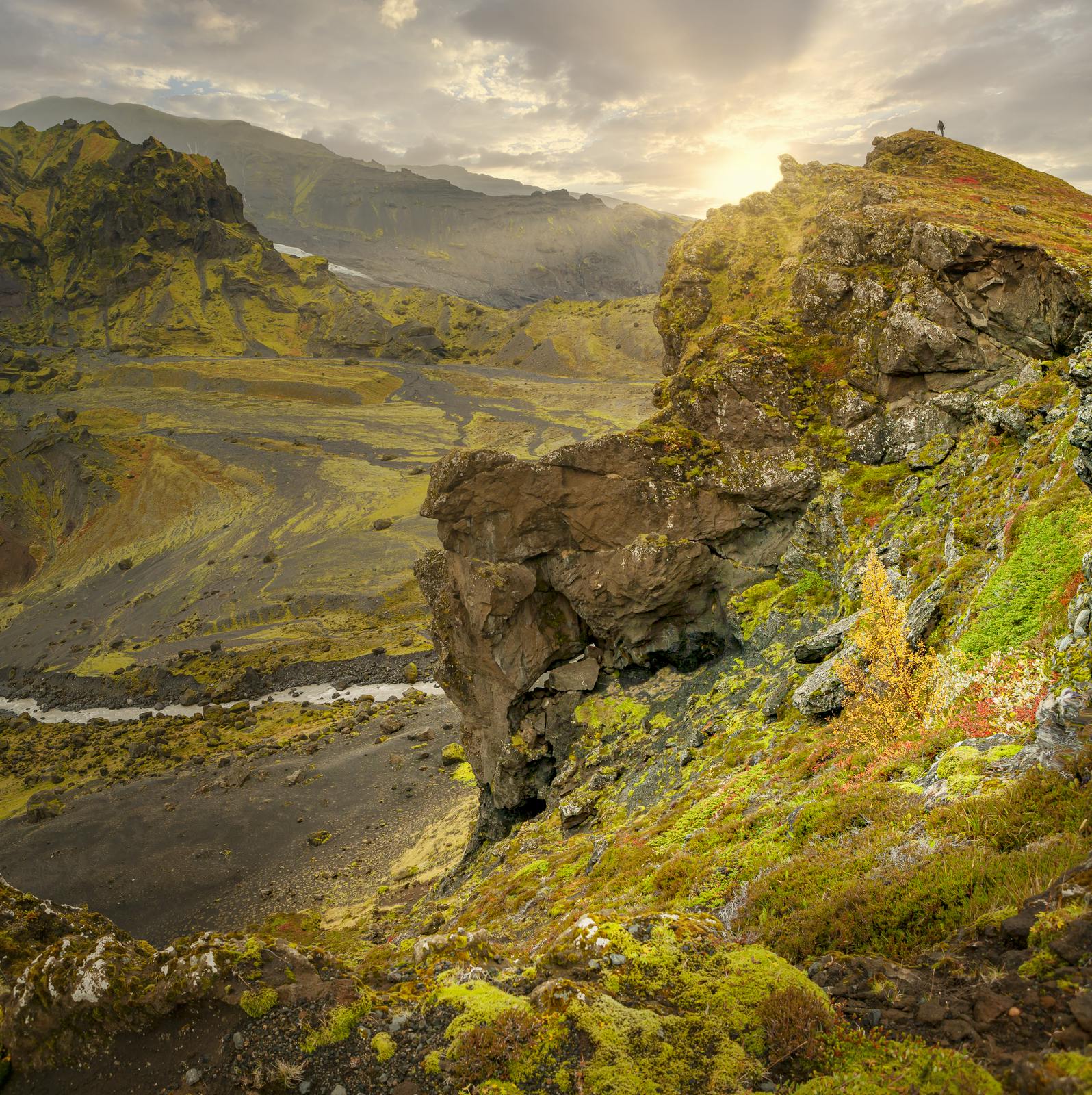
An Unlikely Oasis in the Highlands
Unlike the vast, wind-swept deserts of Iceland’s interior, Thorsmork’s unique microclimate shelters it from the worst of the highland winds. Mountains rise around the valley like natural walls, trapping moisture and moderating temperatures. This protection allows birch forests to thrive, primarily downy birch (Betula pubescens), providing shelter for a rich understory of dwarf willows, mosses, and flowering plants.
This greenery is rare in a country where only about 2% of the land is forested. Historically, farmers from nearby Fljótshlíð brought their sheep here to graze year-round, a testament to the valley’s relatively mild climate and rich vegetation.
A Home for Icelandic Wildlife
Thorsmork’s lush environment supports wildlife that many visitors never see elsewhere in the highlands. The Arctic fox (Vulpes lagopus), Iceland’s only native land mammal, prowls here, using the valley’s shelter and abundant small prey to survive even the harshest winters.
Bird enthusiasts will find a summer paradise. Golden plovers patrol the skies, their haunting calls echoing above the rivers, while redwings and ptarmigans blend expertly into the landscape. In late spring and summer, wildflowers burst into color across the volcanic soil — lupines (introduced but now naturalized), moss campion, and buttercups paint the valley with purples, whites, and yellows, creating stunning contrasts against the black sand.
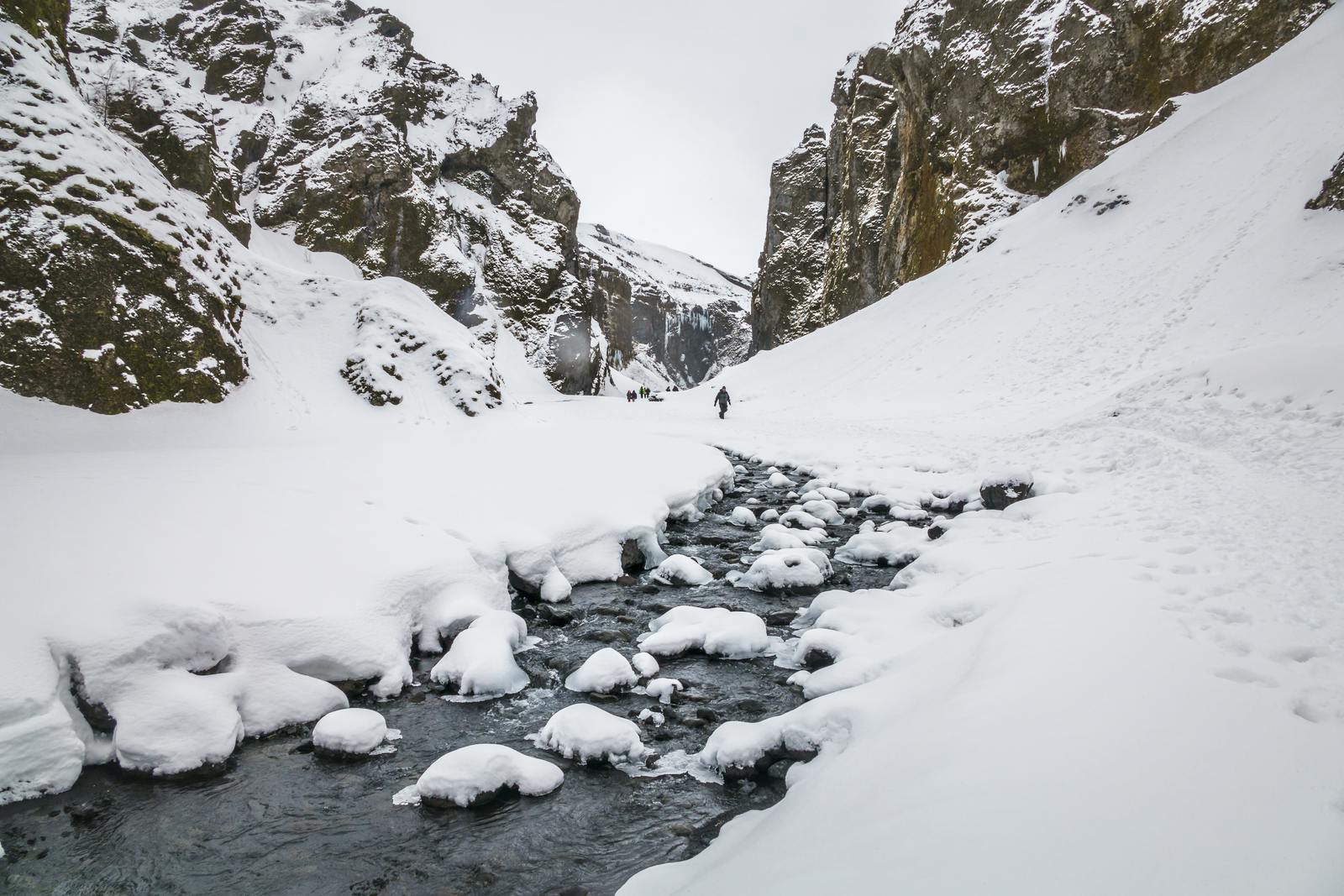
Ice Carves the Landscape
Glaciers have sculpted Thorsmork over thousands of years. The valley’s characteristic U-shaped profile is a classic signature of glacial erosion. Ice slowly grinding against rock carved deep channels and smooth ridges, shaping the landscape we see today.
Meltwater continues this work, flowing through ever-changing channels and cutting fresh paths each summer. The 2010 Eyjafjallajökull eruption dramatically altered the terrain, releasing massive jökulhlaups, or glacial floods, caused by volcanic heat that melted ancient ice. These floods tore new routes through the valley, rearranging rivers and reshaping trails.
Today, retreating glaciers reveal new land where pioneer plants quickly colonize. Mosses and lichens first settle on the fresh volcanic rock, followed by hardy grasses and wildflowers. It’s nature’s slow reclaiming, a constant reminder of Iceland’s living geology.
When Nature Shows Its Best
July and August offer the most stable weather and full services. However, June rewards early bloomers with fewer crowds and wildflowers, while September brings vivid autumn colors and quiet solitude.
Be ready for sudden weather changes: sun, wind, rain, and chill can all come in a single day. Dress in layers, bring waterproof gear, and embrace the unpredictable.
Stakkholtsgjá Canyon
Just a short hike from the main trailhead lies Stakkholtsgjá Canyon, a narrow gorge carved by glacial meltwater. Towering hyaloclastite walls rise on either side, created by subglacial eruption during the ice age. The trail leads visitors through the gorge, past a hidden waterfall shimmering behind ferns and moss.
This hike is perfect for families and anyone looking to experience the power of Icelandic geology up close. The air inside the canyon is cooler and wetter, creating a microhabitat where delicate mosses and liverworts thrive. Children delight in exploring this “secret passage” that feels like stepping into a fantasy novel.
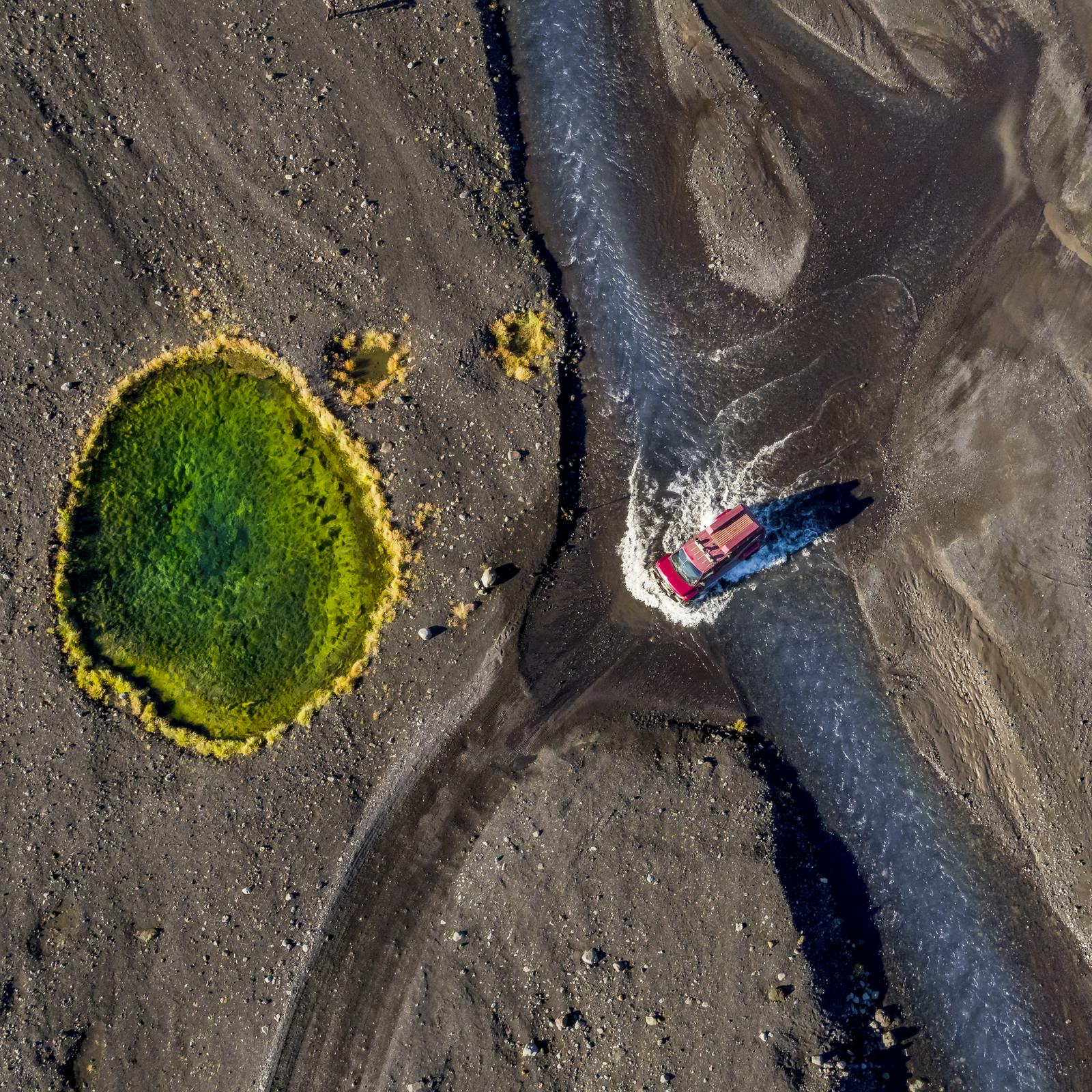
Katla UNESCO Global Geopark
Thorsmork lies within the Katla UNESCO Global Geopark, a recognition of its geological importance and breathtaking landscapes. This status helps protect the valley and its fragile ecosystems, but with rising visitor numbers, conservation depends on each visitor’s care.
The highland environment is delicate: fragile soils, rare plants, and nesting birds suffer from off-trail hiking and litter. Following Leave No Trace principles, which means sticking to marked paths, packing out all trash, and respecting wildlife, is not just encouraged but essential to preserve this wilderness. So remember to do your part!
Getting There: A Journey into the Wild
Thorsmork opens only in the summer months, typically June through September. Winter transforms the valley into an icy labyrinth with raging rivers that block access.
Visitors have three main options:
- Highland Buses: Specially designed to cross rivers, these buses operate daily during summer, safely fording the fast-flowing Krossá river, among others.
- Super Jeep Tours: Guided by experienced drivers who know the terrain intimately, these tours offer expert commentary and guaranteed safe passage.
- Self-Drive: Only for seasoned drivers with specially modified 4x4 vehicles. River crossings are dangerous, and standard rental cars will not suffice.
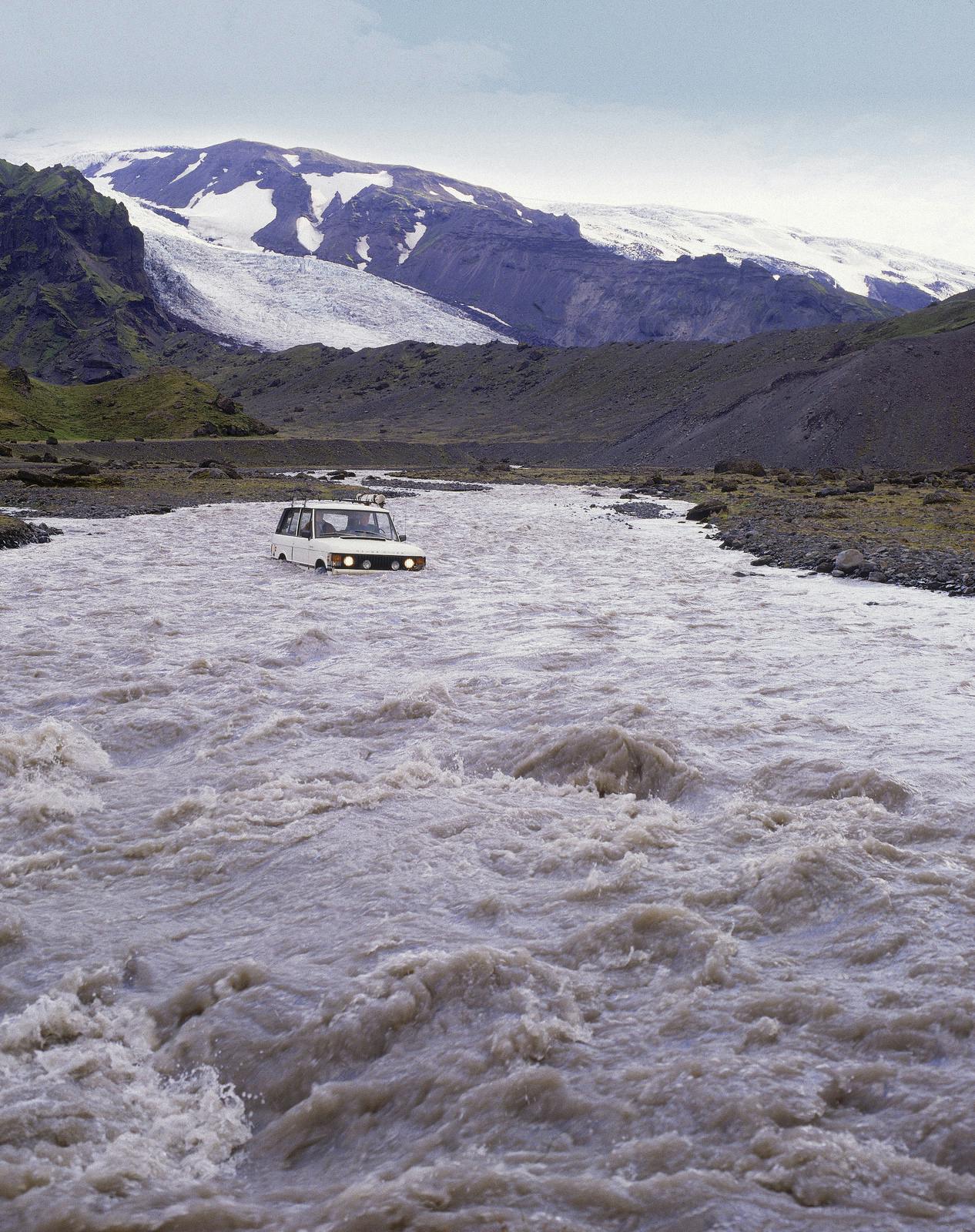
Sleeping in the Shadow of Glaciers
Whether you prefer a cozy bed or a night under the stars, Thorsmork has options. Mountain huts such as Volcano Huts provide warm accommodation, hot meals, and a chance to mingle with fellow travelers.
For the adventurous, campsites allow you to pitch a tent amid the rugged beauty, though wild camping is regulated and may require permits.
Many visitors stay in nearby towns like Hvolsvöllur and make day trips into the valley, balancing comfort with wilderness.
Nature Pairings That Make Sense
If you’re looking for other things to do, combine Thorsmork with other Icelandic gems:
- Landmannalaugar: Famous for colorful rhyolite mountains and geothermal hot springs, accessible via the legendary Laugavegur Trail that ends in Thorsmork.
- Golden Circle: Visit Thingvellir National Park, Geysir hot springs, and Gullfoss waterfall for a classic contrast of landscapes.
- Westman Islands: Just off the south coast, these volcanic islands offer puffin colonies, lava trails, and dramatic seascapes.
Learn More at Perlan
Before venturing into Thorsmork’s raw wilderness, stop by Reykjavik’s Perlan museum. Its immersive exhibits reveal how volcanoes and glaciers shaped Iceland and give deeper meaning to the landscapes you explore.

Frequently Asked Questions
Is Thorsmork worth it?
Absolutely. Thorsmork offers some of Iceland's most spectacular hiking opportunities and unique geological features. The diverse landscape and pristine nature make it essential for serious Iceland travelers.
How long does it take to hike Thorsmork?
Day hikes range from two to twelve hours, depending on your chosen trail. The complete Laugavegur multi-day trek requires four to five full days.
Can you drive to Thorsmork, Iceland?
Only with a specially modified 4x4 vehicle capable of multiple river crossings. Most visitors wisely choose highland buses or super jeep tours for guaranteed safe access.
What does Thorsmork translate to?
Thorsmork means "Thor's Wood" or "Thor's Valley" in Icelandic. It's named after the powerful Norse god of thunder.
Is Thorsmork open in winter?
No. Thorsmork remains accessible only during summer months, roughly June through September. River crossings become far too dangerous during winter conditions.
What is the geology of Thorsmork?
The valley sits strategically between three active volcanic systems and massive glaciers. Volcanic ash, hardened lava flows, and ancient glacial deposits create today's diverse landscape.
Are there hot springs in Thorsmork?
No, hot springs are not found in Þórsmörk.







